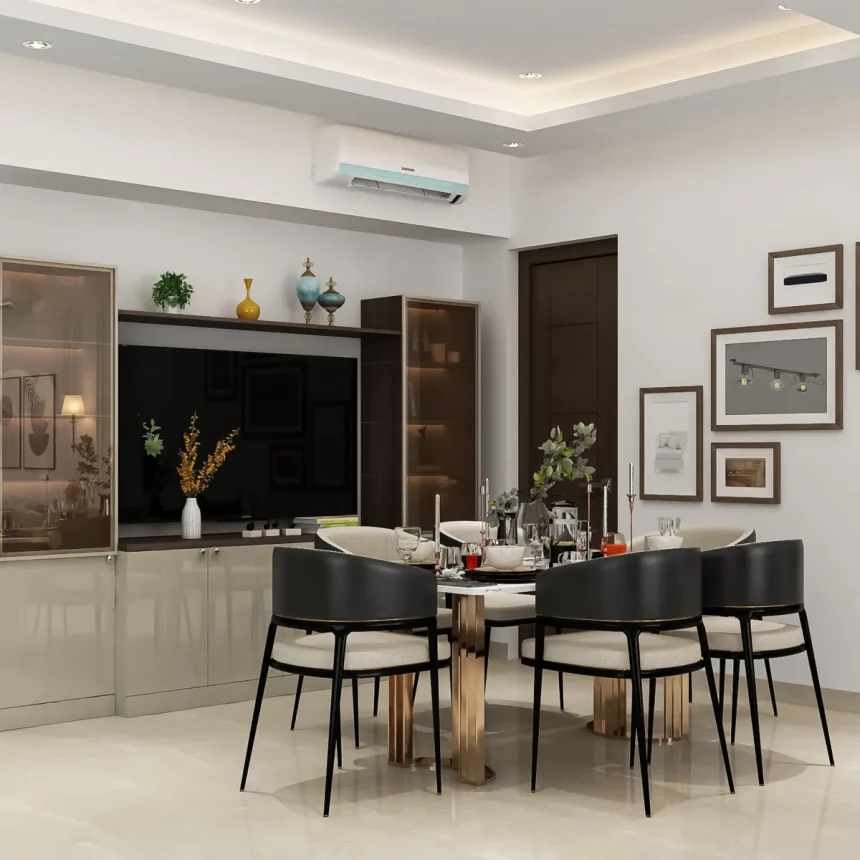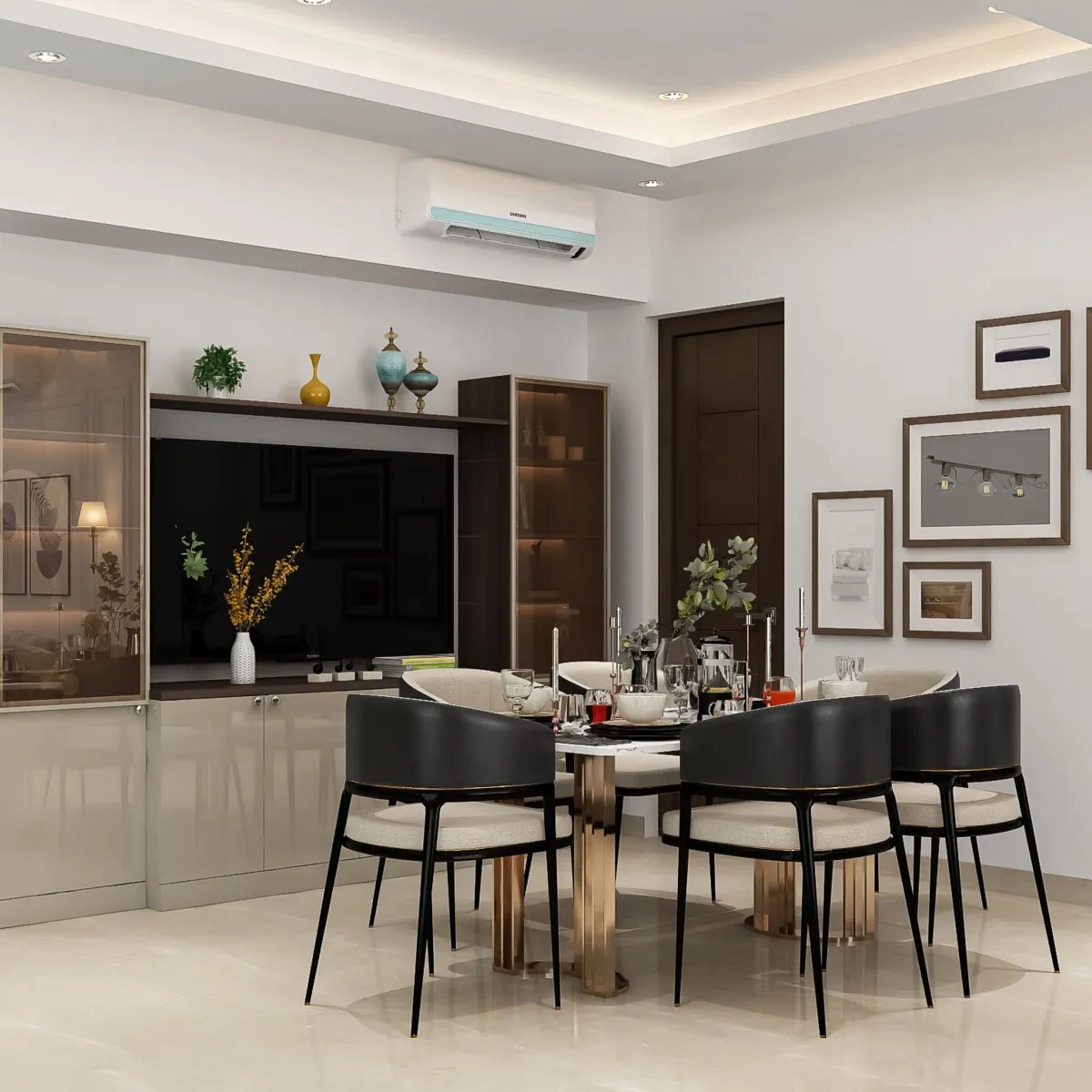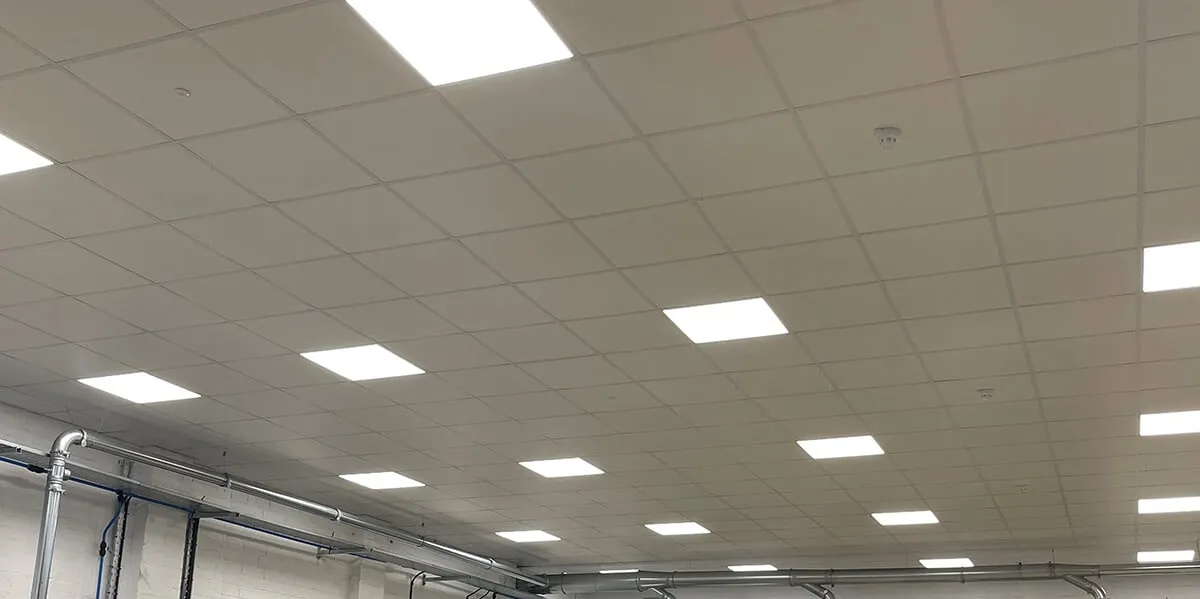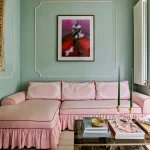Are you dreaming of a drawing room that wows your guests with a stunning false ceiling design? Choosing the perfect ceiling design can transform your space, blending style and function effortlessly. As a homeowner, I know how overwhelming it can be to find modern false ceiling ideas that suit your vibe and budget. That’s why I’ve crafted this guide, packed with trendy designs, practical tips, and expert insights from Aura to elevate your living room. From sleek POP ceilings to elegant wooden designs, you’ll discover inspiration to create a space that feels uniquely yours. Let’s dive in!
What is a False Ceiling and Why Choose One for Your Drawing Room
A false ceiling, also called a dropped or suspended ceiling, is an additional layer installed below your main ceiling. It’s made from materials like gypsum, POP (Plaster of Paris), wood, or metal. The idea is to create a smooth, stylish surface that hides wiring, pipes, or uneven ceilings while adding a fresh look to your room.
Choosing a false ceiling for your drawing room comes with plenty of benefits:
- Improves the room’s appearance: It instantly upgrades the look, making your drawing room feel more modern and elegant.
- Adds lighting options: You can easily install recessed lights, spotlights, or cove lighting to create the perfect mood.
- Enhances insulation: It helps with temperature control and soundproofing, making the space more comfortable.
- Conceals flaws and utilities: Say goodbye to unsightly wires, cracks, or ceiling stains.
Your drawing room is the heart of your home—the place where you entertain guests and spend quality time with family. A well-designed false ceiling elevates this space, making it inviting and stylish. It sets the tone for the rest of your home’s decor while offering practical benefits like lighting and acoustics. With so many design options available, a false ceiling can suit any style, whether modern, classic, or rustic.
Top 25 False Ceiling Design Ideas for Your Drawing Room
When it comes to false ceiling design for your drawing room, there are plenty of styles to choose from that can instantly elevate the space. Here are some top ideas to consider:
Modern Minimalist Designs
- Simple POP (Plaster of Paris) ceilings with clean lines
- Cove lighting that adds a soft glow around the edges
- Single-layer rectangular or square ceilings featuring recessed LED lights for a sleek look
Geometric and Patterned Designs
- Circular or hexagonal false ceiling patterns that bring a modern twist
- Plus-minus POP designs creating interesting shadows and depth
Wooden False Ceilings
- Rustic wooden panels for a warm, natural feel
- Polished wooden panels adding a classy touch
- Latticework or rafter designs that introduce texture and character
Glass and Mirror Ceilings
- Reflective surfaces that make the room feel bigger and brighter
- Glass panels combined with spotlights to create a dramatic effect
Coffered and Tray Ceilings
- Sunken panels arranged in a grid for architectural interest
- Tray ceilings outfitted with ambient lighting to add depth and warmth
Nature-Inspired Designs
- Floral or cloud-shaped POP designs that bring an organic vibe
- Wooden slats combined with faux vines or greenery for a refreshing look
Multi-Layered and 3D Designs
- Layered ceiling styles for a bold, dramatic impact
- 3D printed abstract or themed patterns that make your ceiling a real conversation piece
These design ideas combine function with style, helping you create a drawing room ceiling that’s modern, comfortable, and uniquely yours.
Choosing the Right Material for Your False Ceiling
Picking the right material for your false ceiling matters a lot. It affects how your ceiling looks, lasts, and fits your budget. Here’s a quick guide to the common materials for false ceiling design in your drawing room:
Plaster of Paris (POP)
- Flexible and easy to mold
- Durable and smooth finish
- Budget-friendly option
- Great for creating intricate designs
Gypsum
- Lightweight and strong
- Fire-resistant and moisture-resistant
- Works well in humid climates
- Gives a clean, modern look
Wood
- Adds warmth and natural beauty
- Eco-friendly if sourced responsibly
- Needs more care to avoid damage
- Perfect for rustic or polished ceiling designs
PVC and Metal
- Both waterproof and highly durable
- Ideal for areas prone to moisture
- Metal offers a modern industrial vibe
- PVC is low maintenance and easy to clean
Fabric and Fiber
- Used mostly for temporary or creative setups
- Adds texture and softness to the space
- Not as durable but great for special events or unique styles
Here’s a quick comparison:
| Material | Durability | Maintenance | Aesthetic | Cost |
|---|---|---|---|---|
| POP | High | Low | Versatile | Budget-friendly |
| Gypsum | High | Low | Modern & clean | Mid-range |
| Wood | Medium | Moderate | Warm & natural | Higher |
| PVC | High | Very low | Practical | Affordable |
| Metal | Very high | Low | Industrial & sleek | Mid to high |
| Fabric/Fiber | Low | Moderate | Soft & creative | Variable |
Choosing the right material depends on your style, room conditions, and how much upkeep you’re comfortable with. For drawing rooms in typical U.S. homes, gypsum and POP are often the best bets for balancing durability, style, and cost.
Lighting and False Ceilings Creating the Perfect Ambiance
Lighting plays a huge role in how your false ceiling looks and feels in your drawing room. The right lighting can highlight the design, create a cozy atmosphere, and even make the room appear bigger.
Why Lighting Matters with False Ceilings
- Enhances design features: Lighting can draw attention to pop designs, wood textures, or layered ceilings.
- Sets the mood: Whether you want a bright, vibrant space or a soft, relaxing vibe, lighting helps control that.
- Improves functionality: Good lighting means comfortable spaces for reading, chatting, or watching TV.
Types of Lighting for False Ceilings
- Recessed LEDs: These are small lights embedded within the ceiling, giving a clean and modern look. They work great with minimalist false ceiling designs.
- Cove lighting: Hidden LED strips placed along the edges of the ceiling that create a soft glow. It’s common in POP ceilings and tray ceilings.
- Chandeliers: Perfect for adding a classic touch or becoming a focal point, especially in drawing rooms with high ceilings.
- Spotlights: Adjustable and great for highlighting artwork, plants, or certain areas in the room.
Tips for Lighting Placement
- Place recessed LEDs evenly to avoid dark spots.
- Use cove lighting in layers to add depth.
- Center chandeliers over seating or the main area.
- Aim spotlights to avoid glare on TV screens or seating areas.
Energy-Efficient Lighting Options
Look for LED bulbs and fixtures with good lumens-to-watt ratios. They consume less power and last longer, which keeps your monthly electric bills down while brightening your drawing room beautifully.
By carefully choosing and placing your lights, your false ceiling design will not only look stunning but also create the perfect ambiance for every moment you spend in your drawing room.
Practical Considerations for False Ceiling Installation
When planning a false ceiling for your drawing room, keep these practical factors in mind:
Room Size and Ceiling Height
- Smaller rooms benefit from simple, low-profile false ceilings to avoid feeling cramped.
- Taller ceilings allow for layered or coffered designs that add depth and elegance.
- Ensure the false ceiling doesn’t reduce the height too much—aim for at least 8 feet of clearance for comfort.
Optimal Height
- Typically, false ceilings hang about 6 to 12 inches below the original ceiling.
- This space is enough to hide wiring, ductwork, and lighting without making the room feel boxed in.
Budget and Cost Estimates
- Cost varies by material, design complexity, and labor.
- Basic POP or gypsum ceilings with LED lighting might cost less.
- Wood or glass panels and intricate patterns tend to be pricier.
- Always allocate some extra budget for installation and unexpected expenses.
Maintenance Tips
- Regular dusting with a microfiber cloth helps keep the ceiling clean.
- Avoid harsh cleaners—mild soap and water usually do the trick.
- Inspect periodically for sagging, cracks, or peeling paint, especially in humid climates.
- Address any signs of pests early by consulting a professional.
Handling Sagging and Pests
- Poor installation or moisture buildup can cause sagging—make sure the contractor uses quality materials and follows proper procedures.
- For pest prevention, ensure the space above the ceiling is sealed and well-ventilated.
Professional Help
- Installing a false ceiling isn’t a DIY job. It requires expertise for structural safety and aesthetic appeal.
- Consulting interior designers or trusted brands like Aura can help you pick the right design, materials, and lighting options.
- Professionals can also provide accurate cost estimates and manage timely, clean installation.
Taking these factors into account will ensure your new false ceiling enhances your drawing room without any headaches. For more ideas on home decor, check out related reads like curtain designs for living room to complete your space’s look.
Trending False Ceiling Designs for 2025
In 2025, false ceiling designs for drawing rooms are all about clean, modern aesthetics combined with smart features and eco-friendly choices. Here’s what’s trending:
-
Minimalist Designs with Neutral Tones
Simple, sleek ceilings in shades like white, beige, and soft gray are making a strong statement. These tones create a calm, spacious feel perfect for modern living rooms. -
Smart Lighting Integration
Lighting that adapts to your mood and needs is becoming standard. Think adjustable recessed LEDs and cove lights that can change colors or brightness, controlled right from your smartphone. -
Sustainable Materials
Eco-friendly options like recycled gypsum, low-VOC POP, and responsibly sourced wood are on the rise. These materials are not only good for the planet but also add natural warmth and texture. -
Bold Colors and Textures
While neutrals dominate, some homeowners are experimenting with deep blues, greens, or textured finishes like wood grain, matte, or metallics. This adds a personalized touch that stands out without overwhelming the space.
These trends combine style, functionality, and sustainability, helping you create a false ceiling design for your drawing room that feels fresh and future-ready.
For more design inspiration, check out our guide on curtain designs for living rooms to complement your ceiling perfectly.
How Aura Can Help You Design Your Dream Drawing Room Ceiling
At Aura, we make designing your drawing room ceiling simple and fun. We offer curated false ceiling design ideas tailored to your style and space, so you don’t have to start from scratch. Our expert recommendations guide you through choosing the right materials, patterns, and lighting options that fit both your budget and taste.
With access to extensive product catalogs, you can explore modern false ceiling designs, including POP ceilings, wooden panels, and gypsum options. Plus, Aura provides personalized consultations to help you pick the best design for your home’s unique vibe.
When it’s time to install, we connect you with trusted professionals who ensure a smooth, hassle-free setup. Whether you want minimalist designs with smart lighting or bold patterns for 2025 trends, Aura is here every step of the way.
Ready to transform your drawing room ceiling? Discover ideas, get expert help, and bring your dream ceiling to life with Aura.
FAQs
What is the cost of a false ceiling for a drawing room?
Costs vary depending on materials and design complexity. On average, expect to pay between $8 to $15 per square foot for popular options like POP or gypsum ceilings. More premium materials like wood or custom 3D designs can cost more.
What is the best material for a small drawing room false ceiling?
For smaller spaces, lightweight and moisture-resistant materials like gypsum or POP are ideal. They keep the room feeling open and are budget-friendly. Avoid heavy wooden panels that might make the space feel cramped.
How long does false ceiling installation take?
Most standard false ceiling installations take about 3 to 7 days. Complex designs or multi-layered options might require a bit more time. It’s best to consult with your installer for an accurate timeline based on your chosen design.
Are false ceilings good for room acoustics?
Yes. False ceilings can improve room acoustics by absorbing sound and reducing echo, especially when combined with acoustic panels. This makes them perfect for drawing rooms where you want clear conversation and minimal noise disturbance.
Are false ceilings suitable for humid climates?
Materials like gypsum and PVC are moisture-resistant, making them good choices for humid areas. Wood can be prone to warping or mold, so it requires proper treatment. Always choose materials designed for your local climate to avoid damage.









